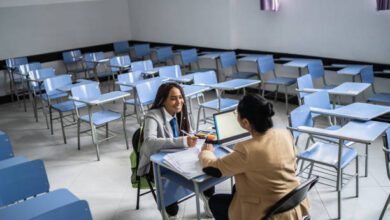The Impact of Educational Technology on Education Policy


Introduction
Education policy plays a crucial role in shaping the future of our educational system. Over the years, there have been significant advancements in technology that have revolutionized the way we teach and learn. The integration of educational technology in education policy has had a profound impact, bringing about both benefits and challenges. In this article, we will explore the evolution of education policy, the influence of educational technology, the benefits it brings, and the challenges it presents, and provide recommendations for effective integration.
Evolution of Education Policy
Education policy has evolved significantly over the years, reflecting the changing needs of society and the advancements in teaching methods. In the past, education policy primarily focused on providing access to education and setting standards for learning outcomes. However, with the advent of technology, a new dimension has been added to education policy.
The Influence of Educational Technology
Educational technology has had a transformative influence on education policy. It has reshape the way students are taught and has accelerate the learning process. The use of technology in classrooms has allowed for more personalized and interactive learning experiences, catering to individual student needs. Additionally, it has enhanced the accessibility of education, breaking down barriers of distance and time.
Benefits of Educational Technology in Education Policy
The integration of educational technology in education policy brings numerous benefits.
Enhanced Learning Experiences: Educational technology enables students to engage with content more interactively, making learning engaging and stimulating. Features such as multimedia, simulations, and virtual reality enable students to explore complex topics and understand them better.
Personalized Learning: Technology allows for personalized learning experiences, where students can learn at their own pace and in their preferred learning style. Adaptive learning platforms provide tailored content and assessments based on individual student needs, ensuring that each student receives targeted instruction.
Improved Access: Educational technology has extended education to students who may not have had access otherwise. Online learning platforms and digital resources have made education more accessible to remote areas and people with physical limitations. This has led to greater inclusivity and equal opportunities for all.
Efficient Assessment: Technology has revolutionized the assessment process. Digital assessment tools provide instant feedback, allowing for timely intervention and support. It also reduces the burden on teachers, freeing up their time to focus on individual student needs.
Collaborative Learning: Educational technology promotes collaborative learning, where students can work together, exchange ideas, and learn from each other. Online discussion forums and collaborative platforms foster communication and teamwork, equipping students with essential skills for the future.
Challenges and Limitations
While the integration of educational technology in education policy has brought numerous benefits, it also presents challenges and limitations that need to be addressed.
Cost and Infrastructure: Implementing educational technology requires substantial investments in terms of infrastructure, devices, and software licenses. This can be a significant barrier, particularly for schools and regions with limited resources.
Digital Divide: The digital divide is a reality that needs to be addressed when integrating educational technology. Not all students have access to devices and the internet, leading to inequalities in learning opportunities. Bridging the digital divide should be a priority in education policy.
Teacher Training: The effective integration of educational technology requires teachers to be proficient in its use. Adequate training and ongoing professional development should be provide to equip teachers with the necessary skills and knowledge to leverage technology effectively.
Cybersecurity and Data Privacy: As technology becomes more prevalent in education, it is essential to address concerns regarding cybersecurity and data privacy. Schools and policymakers must have robust policies and measures in place to protect students’ personal information and ensure a safe learning environment.
Recommendations for Effective Integration
To ensure effective integration of educational technology in education policy, the following recommendations should be considered:
Investment in Infrastructure: Adequate funding should be allocate to provide schools with the necessary infrastructure, including devices and internet connectivity. This will help bridge the digital divide and ensure equal access to educational technology.
Teacher Training and Support: Comprehensive training programs and ongoing support should be provide to teachers to enhance their digital literacy skills. Professional development opportunities should focus on integrating technology into pedagogy effectively.
Collaboration and Networking: Schools and policymakers should foster collaboration and networking among educators to share best practices and experiences in integrating educational technology. This can be achieved through professional learning communities and conferences.
Data Privacy and Security Policies: Education policy should prioritize the development and implementation of robust data privacy and cybersecurity policies. This will ensure the protection of students’ personal information and create a safe digital learning environment.
Conclusion
The integration of educational technology in education policy has revolutionized the way we teach and learn. It has brought forth numerous benefits, including enhanced learning experiences, personalized learning, improved access, efficient assessment, and collaborative learning. However, challenges regarding cost, digital divide, teacher training, and data privacy need to be addressed for effective integration. By investing in infrastructure, providing comprehensive teacher training, fostering collaboration, and implementing sound data privacy policies, educational technology can be effectively integrated into education policy, leading to better educational outcomes for all students.





